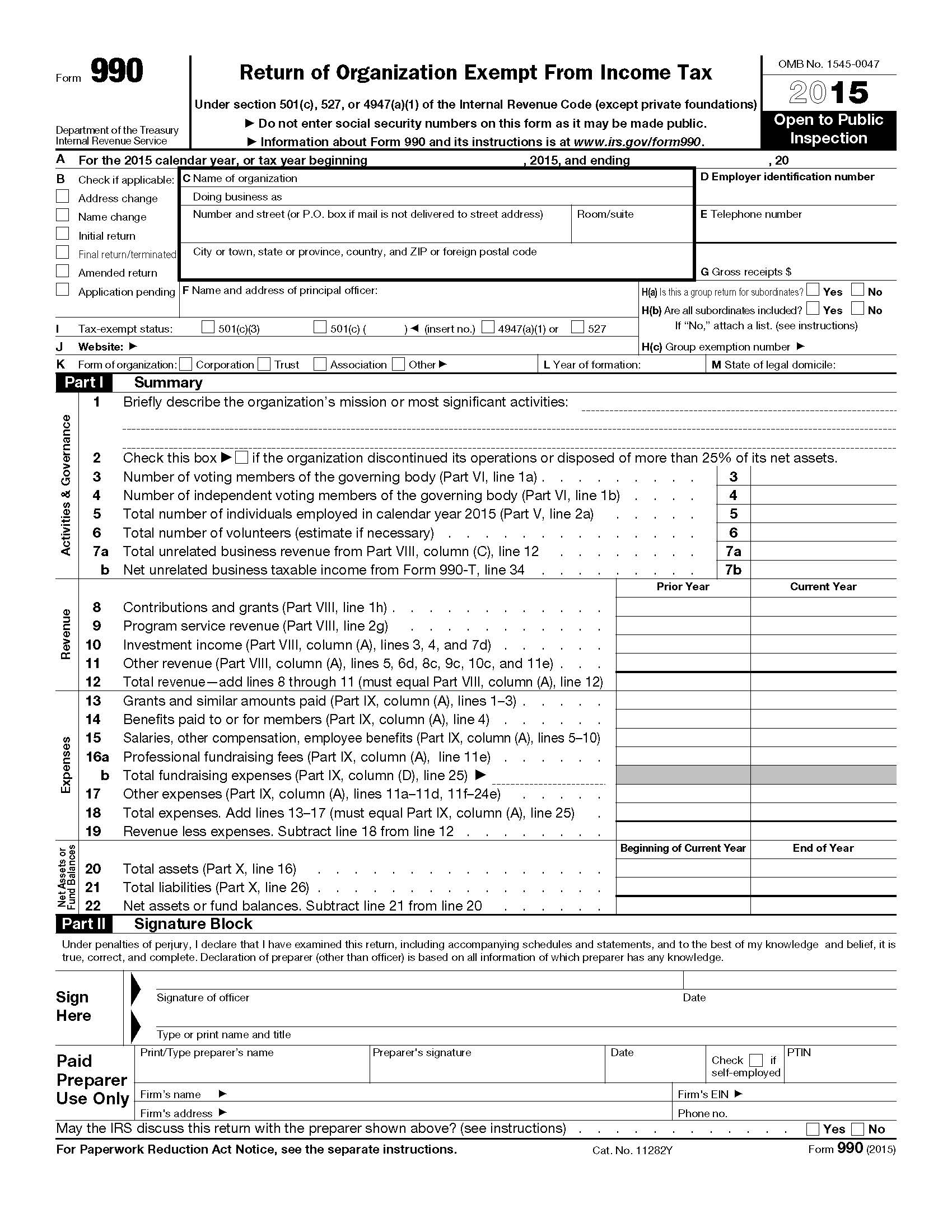
Information posted yesterday on the California Legislature’s web site shows the Appropriations Committee will hold hearings on AB 1181 next month, on August 19, 2019.
Nonprofit finance, accounting, and tax news. Other tidbits of interest to the charity community.

Information posted yesterday on the California Legislature’s web site shows the Appropriations Committee will hold hearings on AB 1181 next month, on August 19, 2019.

There are a number of state and federal actions visible for financial reporting by charities. Focus of the efforts currently is valuation of GIK and the impact of those valuations on fund raising appeals. Perhaps a recap of those efforts will provide some helpful context to the charity community.
Update: End of this post describes the change in accounting over the last seven years in terms of how to value meds that legally may not be distributed in the U.S. Hint: a 180 degree change.
Today is the 9th day of out of 15 days scheduled for hearings on the California AG’s cease and desist order (C&DO) for MAP International (MAP), Food for the Poor (FftP), and Catholic Medical Mission Board (CMMB).
Here is the list of publicly visible Attorneys General who are focusing on financial statements of the large medical GIK charities:
California:

The battle over the AG’s cease and desist order is in the appeal stage. Hearings are in day 6 out of 15 scheduled days.
The appeal is taking place in the state Office of Administrative Hearings (OAH). An Administrative Law Judge (ALJ) is overseeing the appeal.
This is the second in a series of posts describing some of the filings in the public record regarding the enforcement action and the appeals by the charities.
I have one stray follow-up comment to my previous post and then will dive into the filings about obtaining depositions from people living outside the state. Those individuals are not subject to an order to appear in person before the OAH.
Might want to get a fresh cup of coffee. This will be a long read. If you are at all interested in this case, you will find lots of interesting background info here.
Oh, everything I mention here is based on public documents available from the OAH.
Follow-up on Pro Hac Vice – FftP filed with OAH to get one of their attorneys granted Pro Hac Vice permission to practice in the state. This attorney is the lead litigator for the law firm on non-profit issues. Of note is the motion says it is unopposed by the AG. The OAH ruled they do not have authority to grant Pro Hac Vice. I don’t fully understand the reasoning, but I think it is essentially that the state bar or a court grants such status and the OAH is neither the state bar nor a trial court that can grant the permission. So, another motion, running 60 pages in length, was filed with the Superior Court of the county of Los Angeles. That court agreed it had authority and granted the attorney Pro Hac Vice status.
The docket shows a notice filed by MAP regarding Pro Hac Vice. I didn’t read it and assume it was announcing the same results for their counsel. I didn’t see anything on the docket from CMMB.
Protocol for naming individuals mentioned in filings
As I started this series of posts, I pondered how to name the individuals that are mentioned.
Full name? Initials? First name and initial of last name? No name?
Here is my conclusion:
For only the expert witnesses, my posts will list the person’s full name. Those individuals want to be in the public eye and want to be known as an expert. It looks like they usually speak in public on a regular basis. Thus I am comfortable listing their full name.
For everyone else in the case, such as management and staff of the charities along with partners and staff of CPA firms, it is different. They did not sign up to be in the public spotlight, so I’ll skip their last names. My posts will list their first name and first initial of the last name. I’ll also list job title or job description along with their employer when pertinent. Those in the know already know who has been dragged into the case.
Obtaining permission to obtain depositions
The AG wanted to depose a number of people who reside outside California but cannot be compelled to attend a hearing by the OAH. Thus the process the AG had to follow is request the ALJ to approve taking depositions. The charities can file objections, which they did. (Charities unsuccessfully claimed these constitute discovery, which is not allowed under OAH regulations.). After addressing objections, the ALJ then issues orders allowing certain people to be deposed. The AG then goes to the Superior Court to request an enforceable order for those individuals to be deposed.

Here are the hearing dates for the three charities accused by the California AG of overstating revenue and program expenses.
As you recall, the AG filed cease and desist orders against three charities. The charities have all appealed the order.
The calendar for the appeals can be tracked at the Office of Administrative Hearings website. On the right side of the page, third option from the top, is Calendar – General Jurisdiction.
Scheduling info is:

The Cease and Desist Order filed by the Michigan Attorney General on December 19, 2017 provides an analysis of the joint cost allocation methodology used by Food For the Poor. The Order can be found here.
FFP hires pastors from various denominations to make presentations at churches in the pastors’ denomination. FFP applies joint cost allocation accounting to classify a large portion of the speakers’ time as program services. The AG concluded the allocation methodology did not follow GAAP.
As mentioned previously, FFP settled the AG’s allegations by agreeing to pay the state $300,000 and revising its fundraising materials.
For general education of the nonprofit community, this post will quote the AG’s Cease and Desist Order at length on the joint cost allocation issue.
The authoritative explanation of what constitutes generally accepted accounting principles is found in FASB’s Accounting Standards Codification™ (ASC). I will add some citations from ASC to the AG’s Order. Will also add a few comments along the way.
A detailed look at the AG’s Order is valuable because it provides an in-depth analysis of a specific situation with a detailed comparison to authoritative GAAP.
You might want to get a fresh cup of coffee since this post is a long read, currently sitting at over 1,500 words. It is also quite technical.

On October 1, 2018, Mark Hrywna reports in Nonprofit Times that Food For the Poor Settles With Michigan AG. The settlement calls for FFP to pay the state $300,000 and to revise its fundraising appeals.
Action is based on 2015 financial data. The filed data shows 96.5% of all expenses are categorized as program services, according to the article. The AG asserts that if gifts-in-kind are excluded, program services would be about 67%.
The AG issued a cease and desist order in December 2017. More on that later in this post.
Might want to get a fresh cup of coffee. This will be a long read.
My summary of the numbers mentioned in Attorney General’s Cease and Desist Order:
| $ total expense | $program | $ supporting svc | prog % | |
| per filing | 1,157.5 | 1,117.0 | 40.5 | 96.5% |
| GIK | 1,033.3 | 1,033.3 | ||
| cash exp. | 124.2 | 83.7 | 40.5 | 67.4% |
One particular fundraising pitch is mentioned in the article. FFP conducted a “6 Cents Appeal”, in which it claimed, quoting the article quoting the campaign, that “It only takes 6 cents to provide a meal for a starving child.” The AG took exception to this campaign for multiple reasons. More later in this post.
Article says FFP denies the accusations which leaves us in the typical situation seen in such settlements: While denying the quite serious allegations, the charity will write a $300,000 check from donor funds to pay the state since they did nothing wrong and change their fundraising materials, all of which was actually fine, with both those actions done voluntarily since they didn’t do anything inappropriate.
Dropping the smart alack tone, I really do understand why such comments are absolutely necessary in negotiating a settlement, especially since the California AG still has a separate Cease and Desist Order under appeal. It still rubs me the wrong way, but that’s just me.
Press release from AG

Food For The Poor Executive Director Angel Aloma provided the following response to the post earlier today discussing several news articles. I am pleased to print the comments, with permission of FFP. For ease of reading, the comments will not be put in quotations.
FFP has another statement at their website which you can read here.
The FFP statement, which is in response to comments in the Boston Globe article:
Food For The Poor is troubled by recent news coverage suggesting that our non-profit organization is not transparent about how we operate. Nothing could be further from the truth.
The claim that we deliberately mislead donors is contradicted by the facts. The regulatory action brought by the California Attorney General does not suggest any wrongdoing on our part in the handling of donations or our daily operations. It is an accounting issue about how we value donated goods and we are challenging it.
The Attorney General’s office claims that we have over-valued our pharmaceuticals because we have used the United States as our principal market and have valued our pharmaceuticals at U.S. wholesale prices, rather than international prices related to the 17 countries we serve. However, almost all international nonprofit organizations that receive significant donated goods use the same industry-specific methodologies to value their donated pharmaceuticals in accordance with Generally Accepted Accounting Principles (GAAP) established by the Financial Accounting Standards Board (FASB). In following those standards, we are required to value all of our donated goods in a fair and consistent manner and to declare that value as revenue in our financial statements.

There are a few recent articles discussing enforcement action by the California Attorney General regarding the accounting for donated medicine used by three national charities. Looks like the issue is beginning to get a bit wider attention than this teeny tiny little ol’ blog.
Inflated Expectations / What’s going on with foreign affairs nonprofit Food for the Poor? from Slate on May 10, 2018, provides a non-technical description of the issues raised by the California AG.
Good explanation of medicine valuation, near-term expiry, joint cost allocation, principal market, access, and materiality issues without ever using those words. Even hints at daisy chain and SFAS 136 agency transactions.
Let me suggest a couple of exercises for accountants in the audience.
First, read through the article another time identifying all the accounting issues touched upon. Think about that as an illustration of how to describe technical accounting issues without being technical. (Yeah, I know, what a crazy idea – explaining stuff so people will understand.)
Second exercise is to read through the article thinking about how non-accountants would respond to each of those ideas if it was the first time they had heard about it.
How many of those GAAP accounting treatments would actually make sense?
How many would seem flat-out silly to people who haven’t spent years working with accounting rules?
Description of one shipment

There is a serious problem in the nonprofit community in terms of accounting for donated medicine. Three major enforcement actions by various regulators tell us that the regulators have serious reservations about how charities are dealing with gifts-in-kind.
Those of us working in the charity world need to ponder what could be making so many regulators so concerned.
50 Attorneys General
The rumors in the wind mentioned in my next post were discussed in 2012. That turned into a major enforcement action by the Federal Trade Commission and all 50 state Attorneys General against 4 cancer charities. (See my posts under the tag FTC.) That was in 2015.
I’m not aware of any followup by that group and I’ll guess the reason is the complexity of coordinating a 50+ member committee.
For the FTC and all 50 Attorneys General to all be on the same page on an issue should serve as a warning they believe there is a serious problem.
IRS

As mentioned previously, appeals have been filed by the three charities receiving cease & desist orders from the California A.G.
This discussion will highlight some comments in the appeals. Will have a few observation from an auditor perspective along the way. Might want to get a fresh cup of coffee before you dig in. This will be a long post.
Previous posts:
Catholic Medical Mission Board appeal
At seven pages, this appeal is a bit shorter than the others. The page count includes the proof of service and a cover sheet which is the page the AG provided to request an appeal.
In the appeal, CMMB denies all the factual allegations and conclusions of law (para 4). Specific assertions are listed for emphasis:
In the appeal, CMMB requests:

With a deadline of April 11 to appeal cease and desist orders from the California Attorney General, MAP International, Food for the Poor, and Catholic Medical Mission Board each filed their appeal on the 10th or 11th.
You may find a PDF copy of the appeals and cease and desist orders at the AG’s website.
The individual appeals may be found at:

Here are a few articles which will give you a different way of looking at the recent publicity surrounding Wounded Warrior Project. I’ve been swamped by several major projects so haven’t had much time to write recently. Those projects are still not done so I won’t be able to spend as much time on this post as I would like, yet I want to get some comments online for those who have been following the story.
The biggest article is The First Casualty: A report addressing the allegations made against the Wounded Warrior Project in January 2016 by Doug White, published September 6, 2016.
There is a lot of information about the entire story which has received minuscule coverage. Here is my quick recap of his major points:

Professor Brian Mittendorf has outlined his ideas on how the accounting community could pitch in on industry-wide efforts to assess the effectiveness of charities.
1/25 – Counting on Charity – Three Pressing Issues in the Nonprofit Sector that Need Accounting Input – He introduced three areas of nonprofit accounting where accountants could help:
Expanded discussions:

CNN investigators David Fitzpatrick and Drew Griffin report: Cancer charity targeted by feds agrees to put itself out of business. Article says preliminary documents filed in Federal District Court in Phoenix indicate Cancer Fund of America and the related fundraising arm, Cancer Support Services, agreed to turn control over to receivers for liquidation.
In May 2015, the FTC and 50 state attorneys general sued these two charities and two others run by relatives of the president of CFA, alleging fundraising fraud. Two immediately agreed to liquidate. The two discussed in the CNN report initially fought allegations but have now agreed to close their doors.

Sometimes there is a perception in the charity community that those pesky filings with the charity regulators are no big deal. Sometimes board members don’t pay much attention to the 990.
Well, last week the California AG sued one charity in the state for allegedly misleading information in the RRF-1. That is a simple one-page form that has only two numbers: total revenue and total assets. The AG claims the 990s have misleading information in them.
How can the AG of a state sue over a tax return filed with the federal government? Here is the path they take. They allege the one page RFF-1 was misleading because attached to the RRF-1 is the federal 990, which is where they find the information that they consider to be misleading. That gives the state grounds to sue.
The sobering lesson for CPAs who serve the charity community is the AG also sued the CPA firm. In addition, they sued the audit partner personally.